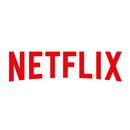
Netflix
Los Gatos, California, U.S.Founding:
Year Founded: Netflix was founded in 1997 by Reed Hastings and Marc Randolph as a DVD rental-by-mail service.
Initially focused on DVD rentals, the company operated on a subscription-based model, offering a vast library of DVDs for rent with no late fees.
Milestones:
2007: Netflix introduced streaming, allowing subscribers to watch content online.
2010: Expansion into Canada marked its first step into the international market.
2013: Premiering original content with "House of Cards" marked a significant shift toward content production.
2016: Global expansion accelerated, reaching over 190 countries.
2019: Competition intensified with the emergence of various streaming services.
2020: Netflix hit 200 million subscribers worldwide.
Evolution:
Transitioned from a DVD rental service to a streaming platform.Shifted focus from licensing existing content to producing original shows and movies.
Adapted to technological advancements, upgrading video quality and introducing features like offline viewing.
Cultural Context:
Netflix disrupted the entertainment industry by pioneering streaming, challenging traditional cable and cinema models.It capitalized on consumers' increasing preference for on-demand, personalized content consumption.
Positioning & Brand Values:
Positioned as a provider of convenience, variety, and personalized entertainment.Emphasized innovation, disruption, and customer-centricity in its brand values.
Product Design:
User-friendly interface allowing easy navigation and content discovery.Algorithms for personalized recommendations based on viewing habits.
Visual Evolution:
Logo and brand identity remained relatively consistent, though refined over the years to reflect modernity and adaptability.Successes and Challenges:
Successes: Rapid global expansion, a vast content library, successful original productions, and a strong subscriber base.
Challenges: Increased competition, rising content production costs, and retaining subscribers amidst growing options.
Controversies:
Criticism over content censorship, pricing changes, and data throttling.Some original content faced backlash or controversy, leading to debates about the platform's editorial choices.
Product Range:
Initially focused on movies and TV shows, expanded to include documentaries, stand-up comedy specials, and original content across various genres.Competitors in Different Segments:
Streaming: Competitors include Amazon Prime Video, Disney+, Hulu, HBO Max, and others.
Content Production: Competes with traditional studios like Warner Bros., Disney, and others producing original content.
Revenue Streams & Financials:
Primary revenue from subscription fees.Diversifying revenue sources through partnerships, merchandising, and licensing deals.
- Other Brands
- Apple
- Microsoft
- Amazon
- Google
- Samsung
- Toyota
- Mercedes-Benz
- Coca-Cola
- Nike
- BMW
- McDonald’s
- Tesla
- Disney
- Louis Vuitton
- Cisco
- Instagram
- Adobe
- IBM
- Oracle
- SAP
- Facebook
- Chanel
- Hermes Paris
- Intel
- YouTube
- JP Morgan
- Honda
- American Express
- Ikea
- Accenture
- Allianz
- Hyundai
- UPS
- Gucci
- Pepsi
- Sony
- Visa
- Salesforce
- Netflix
- PayPal
- Mastercard
- Adidas
- ZARA
- AXA
- Audi
- airbnb
- Porsche
- Starbucks
- GE
- Volkswagen
- Ford
- Nescafe
- Siemens
- Goldman Sachs
- Pampers